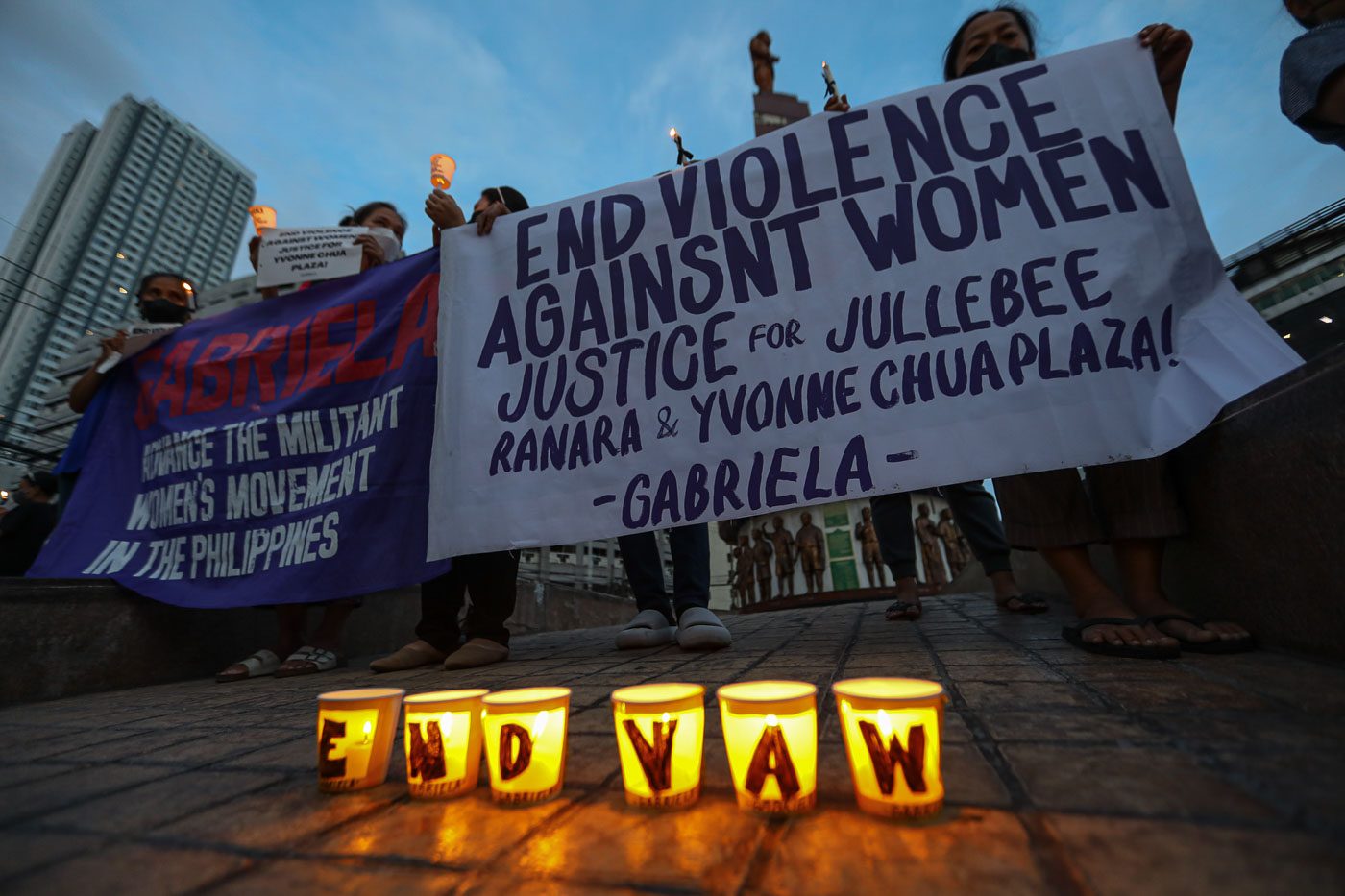SUMMARY
This is AI generated summarization, which may have errors. For context, always refer to the full article.

MANILA, Philippines – The murder of 35-year-old Jullebee Ranara at the hands of the 17-year-old son of her employer once again prompted calls for a deployment ban to Kuwait.
Imposing a deployment ban has been a recurring issue, with some arguing that it is a necessary measure to protect overseas Filipino workers (OFWs). Others argue that it is a blanket decision that hurts Filipino families who rely on remittances sent by OFWs.
Nearly five thousand cases of maltreatment of OFWs were reported in 2020, the majority of which came from the Middle East with 4,302 reported cases.
In a hearing last December, Department of Migrant Workers (DMW) Undersecretary Bernard Olalia admitted that OFWs in problematic cases do not get enough support.
“The reality is a lot of our OFWs, after experiencing contractual violations, physical abuse, sexual abuse, and other forms of harassment would rather go home than pursue and get justice from these erring and non-compliant employers and principals,” he said. “The reality is, we do not have the budget to support them.”
Push factors like lack of income opportunities and low-income jobs in the Philippines are giving many Filipinos no choice but to leave their family and risk abuse.
“I have yet to hear of a Filipino worker who would much rather work abroad and be away from his family if there were sufficient jobs and competitive compensation here in the Philippines,” said Adamson Law School Dean Atty. Ada Abad.
The money sent home by migrants improve a country’s balance of payments, especially for labor-exporting countries like the Philippines.
Remittances of overseas Filipinos reached a record high of $36.14 billion in 2022, accounting for 8.9% of the Philippines’ Gross Domestic Product, according to the Bangko Sentral ng Pilipinas (BSP). This reflected the reopening of economies from the pandemic and higher demand for foreign workers.
Overseas Filipinos constitute one of the largest migrations in the world, with many contract workers deployed to the Middle East.
Of the 1.83 million OFWs in 2021, around 24.4 percent worked in Saudi Arabia, 14.4% in the United Arab Emirates, 5.9% in Kuwait, and 4.8% in Qatar.
Up to 47,000 workers may lose employment opportunities in Kuwait due to the suspended deployment of first-time domestic helpers, adding pressure on recruitment agencies to protect overseas workers.
OFWs in Kuwait
A deployment ban to Kuwait was imposed in 2018 after the murder of Joanna Demafelis, a Filipina domestic worker whose body was found in a freezer in her employer’s abandoned apartment.
The ban was lifted later that year after the two countries signed a labor agreement that included provisions to ensure the safety of all Filipino household service workers and skilled workers in Kuwait.
Today, there are over 268,000 OFWs in Kuwait, 88% of whom are household workers, and 73% are female.
Although the deployment ban was lifted in 2020, concerns about the protection of OFWs in Kuwait persisted.
The recent killing of Ranara, whose case is still being investigated, only added pressure for government action.
The cases of Demafelis and Ranara are not uncommon. There have been multiple reports of OFWs facing similar situations in the Middle East. This suggests that more measures are needed to protect the safety and welfare of OFWs, and that a memorandum of agreement signed in 2018 between the Philippines and Kuwait may not be sufficient.
OFWs in Saudi Arabia
Saudi Arabia was the top destination for OFWs in 2020, according to a Philippine Statistics Authority study.
New deployments were halted in 2021 due to the alleged mistreatment of Filipino workers by a retired general, as well as reports of unpaid wages to construction workers in the billions of pesos.
The ban was lifted in November 2022 through bilateral talks. Both countries agreed on labor reforms and more protection of OFWs.
Arrangements included a standard employment contract that allows OFWs the right to pre-terminate contracts.
OFWs in Qatar
The Philippines imposed a deployment ban in Qatar in 2017, then partially lifted it after a day following a fallout between Qatar and neighboring Arab countries over Doha’s alleged support for terrorism.
After facing international pressure to address the exploitation of migrant workers, the Qatar government signed an agreement with the International Labour Organization (ILO) in 2017 with a promise of reform.
Qatar made progress in 2020 when it ended the No Objectification Certificate (NOC) requirement. All workers are now allowed to change jobs before their contract ends without an NOC from their employer, but weak implementation and enforcement would mean that many are still subject to exploitation.
Leading up to the World Cup in Qatar in 2022, there were reports of abuse of OFWs.
Government action
The Philippine government has pledged to address concerns over the welfare and protection of OFWs, especially for those working in countries where their rights and safety are not always guaranteed.
DMW Secretary Susan Ople said she personally saw the unhealthy living conditions in government-run shelters in Kuwait.
She is positive that the existing bilateral labor agreement with Kuwait can be improved. It seemed unlikely that the Philippines will impose a total deployment ban.
“There are actual OFWs who have already worked in Kuwait for several years who still want to go back to their old employers or seek new ones,” Ople said.
She assured overseas workers that several other countries are willing to provide employment, and that OFWs in other countries are in demand.
“Hong Kong remains a strong alternative and is much nearer to home, and we also have Singapore where we have very good relations with our counterpart ministry,” Ople explained. – Cecilia Ignacio/Rappler.com
Cecilia Ignacio is a 3rd-year Economics and English undergraduate student at the University of Notre Dame. She works under Rappler’s Research unit.
Add a comment
How does this make you feel?
![[OPINION] How and when can this ‘Filipino Dream’ of labor migration come to its end?](https://www.rappler.com/tachyon/2022/02/NS-ofw-1.jpg?fit=449%2C449)




There are no comments yet. Add your comment to start the conversation.